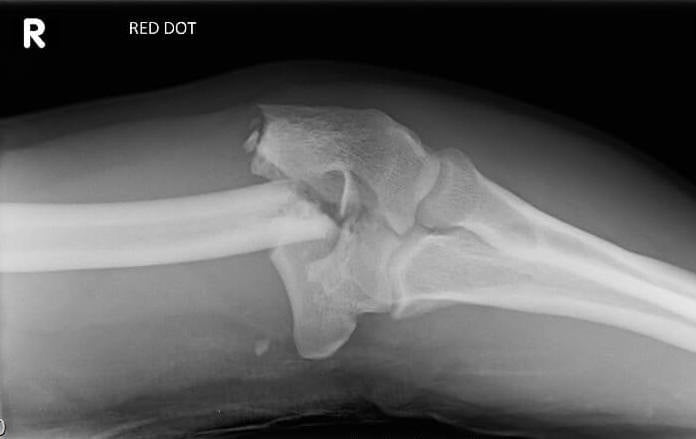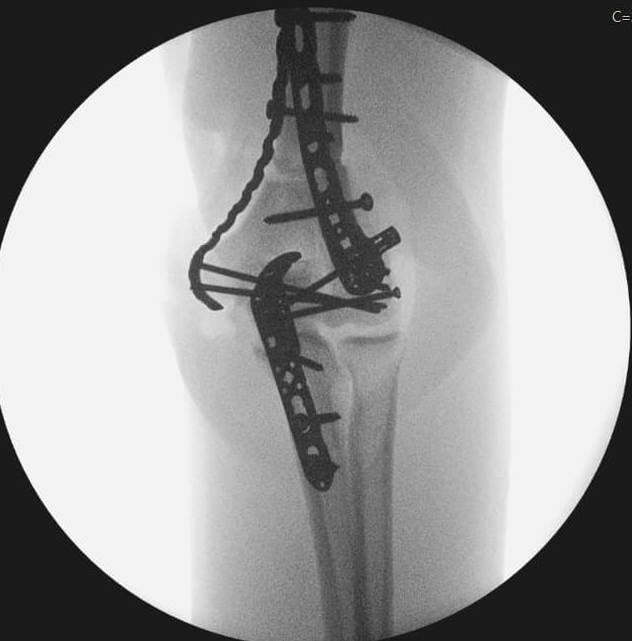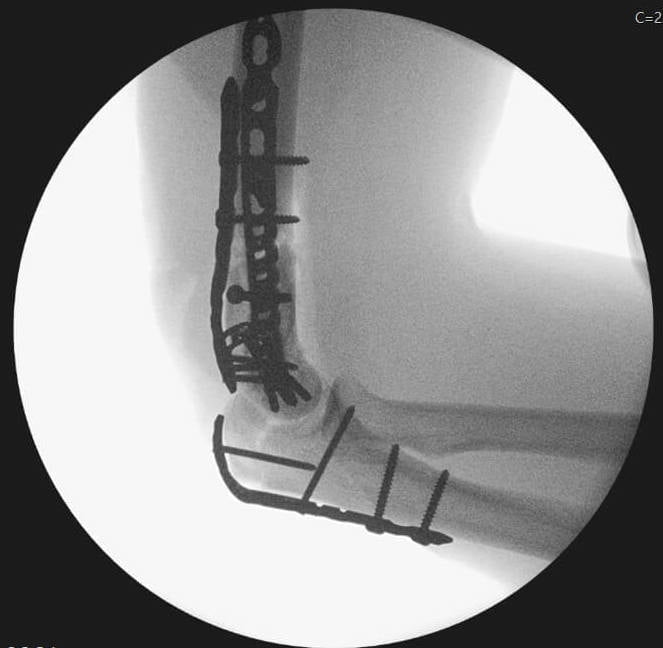Georgios Panagopoulos MD | Orthopaedic Surgeon

Table of contents
What is a distal humerus fracture?
The humerus is the long bone of the arm. The top of the humerus is part of the shoulder joint, and the bottom is part of the elbow joint. A distal humerus fracture is a break involving the lower part of the humerus that articulates with the elbow. These fractures are less common, require a higher energy mechanism to occur, and are more complex to repair.
What causes a distal humerus fracture?
These fractures are often caused by high-energy trauma, such as motor vehicle accidents or falls from a height. They can occur at any age. In older patients, they are often low-energy fractures after a fall. In older patients, they are also usually comminuted and very close to the joint.
What are the symptoms of a distal humerus fracture?
Symptoms of a distal humerus fracture include:
- Elbow pain
- Swelling and bruising in the elbow
- Bruising can track down the arm by gravity
- Inability to bend or straighten the elbow
- Numbness and tingling of the hand and fingers, if one of the nerves is bruised.
How is a distal humerus fracture diagnosed?
The doctor will see you, take a detailed history and perform a physical exam focused on your neurovascular status, taking care not to cause any further pain and discomfort. An x-ray is usually sufficient to confirm the diagnosis. Your doctor is likely to request further imaging, typically a CT scan, to help with preoperative planning.
How is a distal humerus fracture treated?
If your break is minimally displaced, or if you have many medical problems and you are not a candidate for surgery, your distal humerus fracture may be treated conservatively. However, conservative treatment for distal humerus fractures (the so called “bag of bones” treatment) has been largely abandoned nowadays, as results have been pretty bad. Most distal humerus fractures today need and get surgery. Surgery involves an incision in the back of your elbow through which the surgeon puts the bones back together and fixes them with plates and screws (ORIF).




Sometimes, especially in the elderly, if the fracture is very comminuted, the bone quality is not good and the bones are not fixable, an elbow replacement is more appropriate. This can be a total elbow arthroplasty or a hemiarthroplasty, based on the surgeon’s preference. In any case after surgery, early mobilization is encouraged to avoid stiffness and regain the normal elbow range of motion. Your surgeon and physiotherapist will create an individualized rehabilitation program for you.
Distal humerus fractures can be pretty spicy and difficult to fix, and they should be treated by an experienced elbow surgeon. Dr Panagopoulos has extensive surgical experience in complex elbow surgery and will discuss in depth the procedure with you during your visit in the office.
Distal humerus fractures: Complications
There are risks associated with all surgical procedures. If your doctor recommends surgery, he or she believes that the potential benefits outweigh the risks.
- Infection: There is a risk of infection with any surgery. Your doctor will take specific steps to prevent infection.
- Nerve and blood vessel damage: There is a small risk of damage to the nerves and blood vessels around the elbow. Temporary numbness in the hand, or weakness in the hand and wrist, may occur. This is caused by stretching of the ulnar nerve during the procedure, and may take weeks or months to resolve. In rare cases, the ulnar nerve may be injured during the procedure and may require further surgery to recover.
- Nonunion: Sometimes, a fracture does not heal. The fracture can become displaced and the screws, plates, or wires can move or break.
Nounion can occur for a variety of reasons, such as:
- Patient is non complaint with postoperative instructions.
- Patient has a health condition that can delay healing, such as diabetes. Smoking is also notorious for delaying bone healing.
- Healing is also slower in case of open fractures.
- Infections can also delay or preclude fracture healing.
- If nonunion occurs, further surgery may be needed.
FAQs - Frequently Asked Questions
What is a distal humerus fracture?
A distal humerus fracture is a break involving the lower part of the humerus that articulates with the elbow.
What's the typical mechanism of injury?
A distal humerus fracture can occur after a fall off the bike or a road traffic accident. It can also happen after a simple fall on the elbow.
What's the treatment?
Most distal humerus fractures today need and get surgery. Surgery involves an incision in the back of your elbow through which the surgeon puts the bones back together and fixes them with plates and screws (ORIF). Occasionally, arthroplasty may be needed.
Find us
Book an appointment with us today
